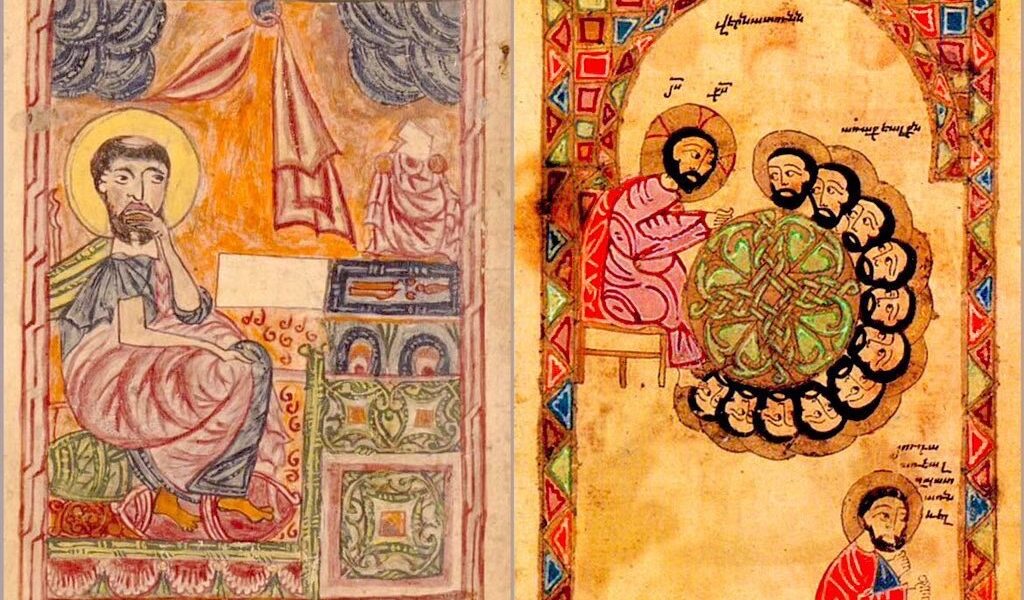Armenian illuminated manuscripts in Artsakh (Nagorno-Karabakh) and Armenia include various humanities of Ancient and Medieval Armenian culture and sciences. The art form was embraced by Greater and Lesser Armenia.
It first appeared in Ancient Armenia with the creation of the Armenian alphabet in 405 AD.
Only a few fragments of an illuminated manuscript from the 6th and 7th centuries have survived. The oldest complete manuscript dates from the 9th century. When the leading Armenian schools and centres began to emerge in the 13th and 14th centuries, art experienced a Golden Age.
Armenian miniaturists have always interacted with other artists from the East and West, and their art has deeply and richly influenced Armenian illumination.

One of the manuscripts from before 1261 was illustrated by one of the famous masters of Armenian miniature, Toros Taronatsi: the manuscripts produced in the southern regions of Artsakh and the Lake Sevan basin are of great iconographic interest and artistic value.
The iconographic features of illuminated manuscripts were created between the 13th and the 18th centuries; more than a hundred images of the illuminated manuscripts are included in the books, aimed at spreading the culture of Artsakh and Utik.
The manuscripts are also related to other forms of medieval Armenian art and Byzantine illuminated manuscripts.

Most of the surviving Armenian manuscripts are Gospels. Portraits are found
as early as the 11th century but always appear in the Bible and Gospels.
Armenian Illuminated manuscripts occupy a very special place in Armenian culture. Early Armenian painted manuscripts feature celebratory designs associated with Armenian culture.
In addition to rich architecture, manuscripts are the most important medium of artistic expression. They span over a millennium of Armenia’s turbulent history and comprise a storehouse of national memory of singular significance.
Manuscripts embodied the power of art and the universality of language.

About 30,000 ancient Armenian manuscripts worldwide, most of which (about 20,000) are preserved in Matenadaran, Yerevan.
Other important collections of Armenian manuscripts are kept in the Library of the Armenian Patriarchate in Jerusalem (approximately 4,000 manuscripts), the Mekhitarist Monastery in Vienna (about 2,500 manuscripts), and the Mkhitarian Brotherhood in Venice (about 4000 manuscripts).
You can follow Lianna Agasyan on X.
READ MORE: King Tiridates III - The first Armenian to participate and win the Olympic Games.


